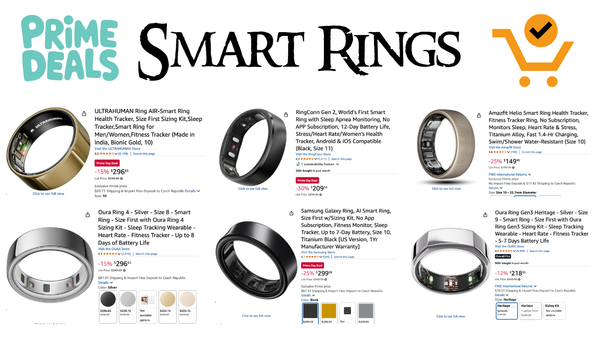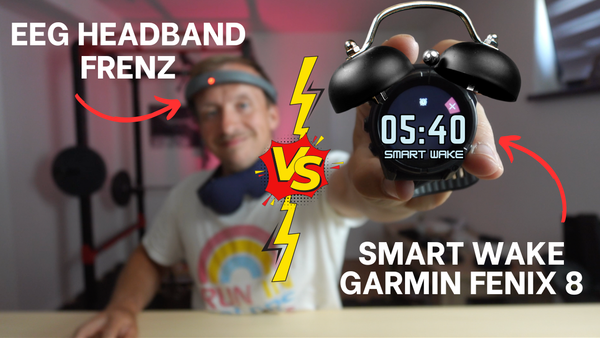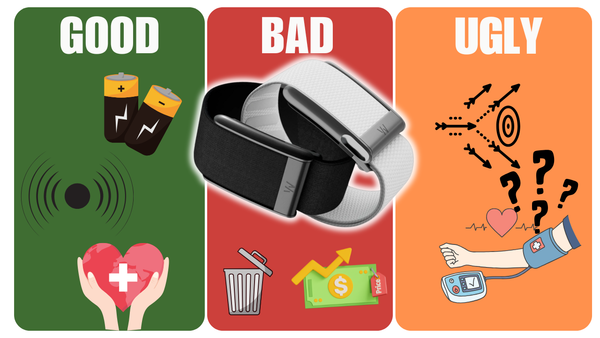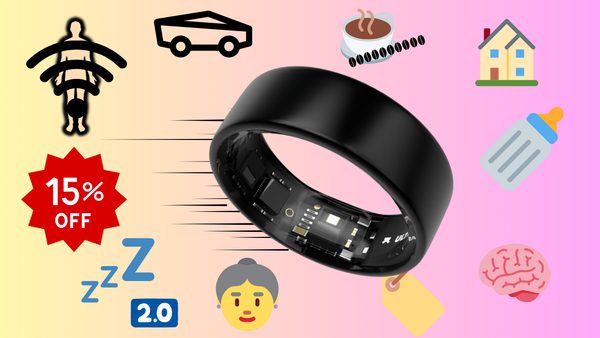Adam Sensor - Smart ring for... penis 🍆
I got to test the Adam Sensor, which is a unique device that you put on your penis and it tells you if your erection matches your age.
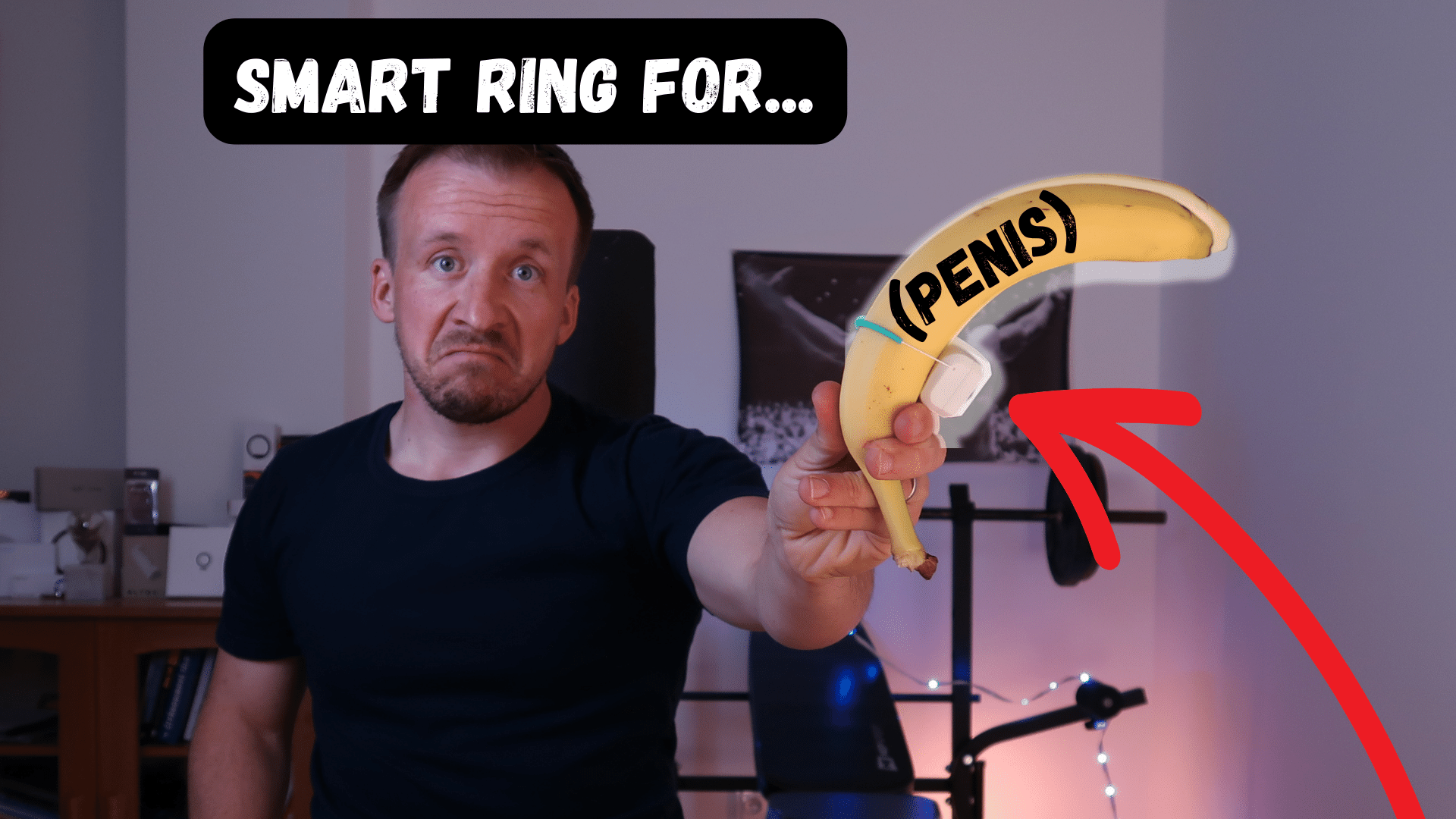
This article is going to be a little different from the others on this website so far. But let me explain...
I was one of the first people around me to wear a smart ring. Which, a few years ago, made everyone wonder what I was wearing. My more humorous friends even commented, "So, do you have also a smart ring for your d*ck?"
Well, years later I can answer "yes". I am currently testing the Adam Sensor, wearable electronics designed exclusively for men.
So in this article I'm going to take a look at what the Adam Sensor is, what it measures and what it all means. And I'll be as anatomically and terminologically correct as possible.
What is the Adam Sensor?
The Adam Sensor is an atypical and intentionally very specific piece of wearable electronics. Wearable electronics are generally used to measure body, movement or sleep metrics. Many people measure how many steps they walked 🚶♂️, how many calories they burned 🔋, how long they slept 🛌, or the blood sugar curve🩸 of a Nutella donut for breakfast. The possibilities are endless.
Adam Sensor focuses on a completely neglected metric. It's the nocturnal erection. Nocturnal erection is a natural phenomenon that occurs unconsciously, "in the background", especially during the REM phase of sleep. Professionally, the erection is called nocturnal penile tumescence.
The theory is that every healthy man experiences 3-5 episodes of erection during sleep (lasting a total of 1.5 to 3 hours). The body maintains a healthy erection mechanism by supplying the erectile tissue with highly oxygenated blood.
I'll talk more about why we need to measure erections later in this article, but for now let's take a look at the sensor itself.
Hardware
To explain it in the most banal way, the Adam Sensor is a small box (let's call it a base) with a string. The string is used to attach it to the penis. Now, the measuring principle is actually quite simple. During an erection, the penis expands, stretching the string, which is detected by the sensor base and the information is stored in the built-in memory.
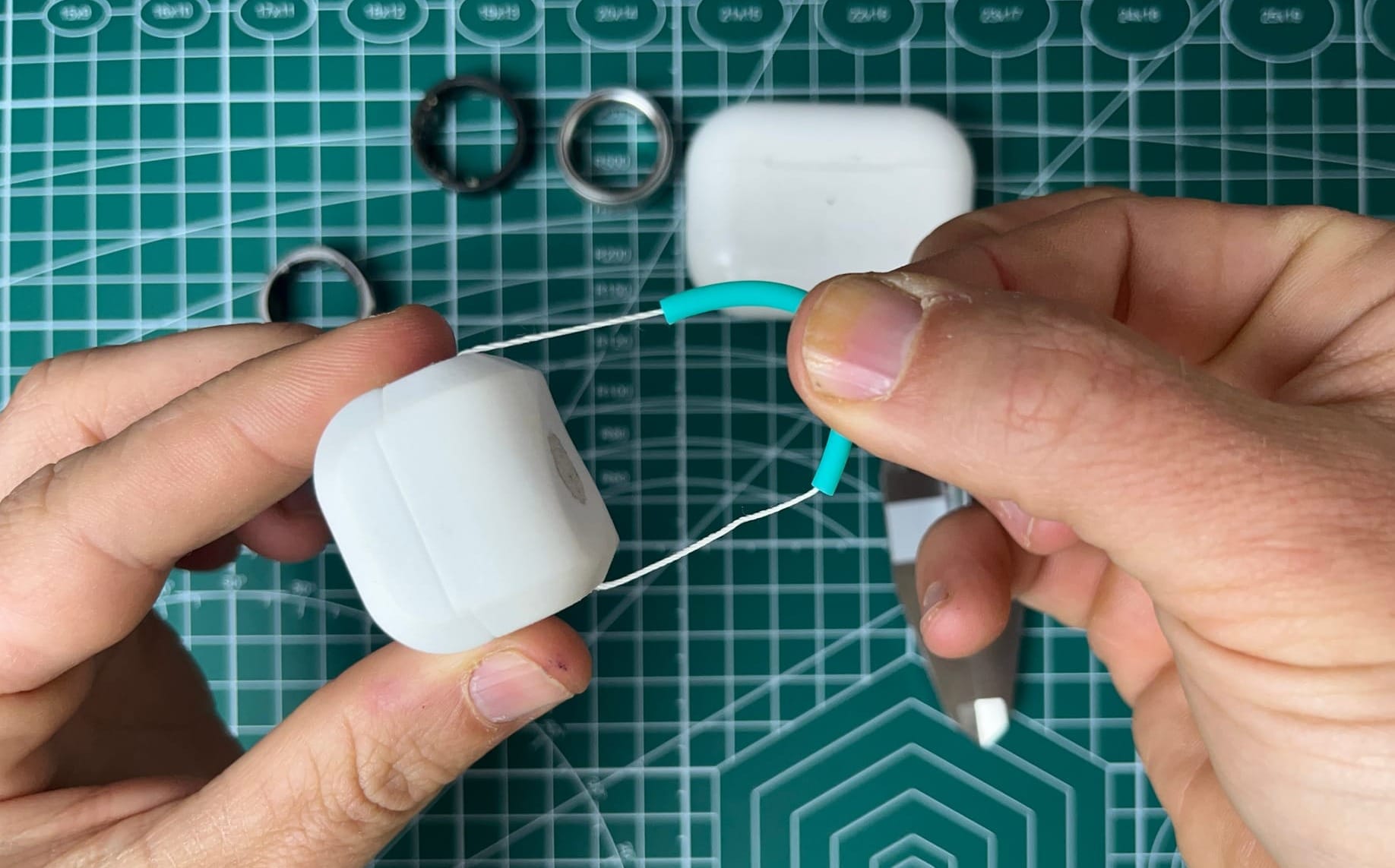
The sensor also has an LED to indicate charging, charging, pairing and device activation. The base also has a built-in battery and a microUSB connector for charging. The sensor can also be switched on and off using a hw button.

The battery lasts one night, so if you measure regularly, you need to charge it every day.
The current version, which was confirmed to me by the manufacturer, Adam Health, is to sort of a prototype. It's not completely debugged, the base could be smaller, the string feels a bit unreliable, etc.
But after my few measurements, I haven't really noticed a major problem. I was concerned about the size of the base and whether it would interfere when sleeping on my stomach. But my experience is completely ok.
📲Software
Like smart rings, the Adam Sensor is a silent data collector. Data is transmitted via Bluetooth to the AdamHealth mobile app (available for both iOS and Android).
The basic navigation of the app is shown in this image.

The application is very simple. It has only three tabs:
- Measurements - individual historical measurements with a click through to the measurement details.
- Connect to Adam - used to start a new measurement.
- Settings - basic profile settings, password etc.
Sensor application 🍌 & measurement
The measurement process is very simple, you charge the sensor before going to bed, put it on your penis and activate the measurement from the mobile app. In the morning, you deactivate the measurement and wait for the data transfer.
The app will also ask you about your subjective feelings about sleep quality.
Results
The application is currently very simple in terms of results. You will mainly see a graph showing the "tumescence activity", i.e. the progression of nocturnal erections over time.

If you want to know more about your penile tumescence, the "Analyse my measurement" option is useful. You will then have to wait a few hours or days while the data is validated by a human on the support site. You will then receive a pdf file of the results in your email.
The results will include the following data:
- A graph with "episodes" marked - in the example below, 5 separate episodes

- Total duration of erection episodes

- Duration and erection quality of each episode

These metrics alone don't tell you much. Is it too much or not enough? That's why the pdf also includes a reference table of "normal values for healthy men without erectile dysfunction" in different age categories.

The authors of Adam Sensor recommend taking at least 3 measurements (over 3 nights) and averaging them. I'm randomly listing my best night (221 minutes) above to show what kind of guy I am 😉
What's next?
After reading the above, you may be heading towards the same questions as me. What comes next? What is the point? What is the conclusion? These are the right questions.
Adam Sensor can serve in several cases, I can think of these three in particular:
- Erectile dysfunction (ED) - primarily, the Adam Sensor can be used to detect whether a possible ED is only a psychological issue, not a physiological one.
- Health Barometer - Erection need not be a metric that is only tied to sexual activity. Abnormal nocturnal erections can also be a very important warning of overall health related to cardiovascular disease, diabetes, and hormonal issues.
- Springboard - how many 5 km can you run? How much is your VO2Max? Fasting sugar? These are now fairly familiar views on how to measure "your health". Adam sensor offers another such metric by which to judge your health. It can also serve as a benchmark to a certain age, i.e. a stepping stone. Erection quality can be worked on and the spectrum of remedies is wide (exercise, medication, stress management, etc.).
Science may reveal more in the future.
Conclusion
What can I conclude? Normally I would be much more critical of the device itself, even in terms of application. There's plenty of room for improvement. The body of the Adam sensor could certainly be smaller, it could have a more modern connector (e.g. USB-C), I think the 'sniffer' and other things could be debugged.
Of course, the application could also be, shall we say, more transparent. At the moment, the measurement results are delayed outside the app itself, i.e. in an email .pdf.
But I think all these things can be improved, the manufacturer is working on it, and at the same time these things are not so crucial. What's much more interesting is the uniqueness of the device. They claim to have developed the first intelligent nocturnal erection meter.
Nocturnal erection is a very little talked about measurement. The sensor currently costs around £150, which can be a lot for somebody, but it can offer unique data. I currently think how to use my sensor. There are various experiments offered to improve nocturnal erections. I may save that for another topic.
However, my readings are now quite good. I think that the sensor can be used primarily by men who are concerned about the quality of their erections, or to check that they are not suffering from erectile dysfunction. And if they do suffer from it, the device can serve as a measure of the quality of their progress.
You can buy the Adam Sensor here:

